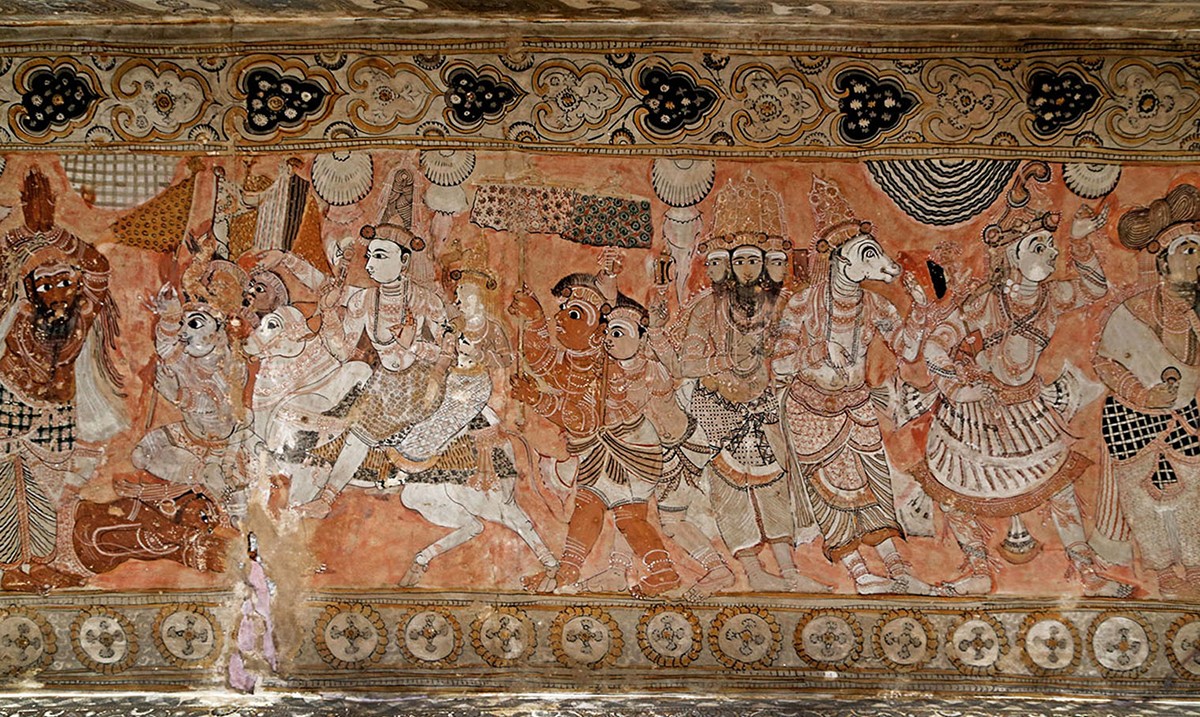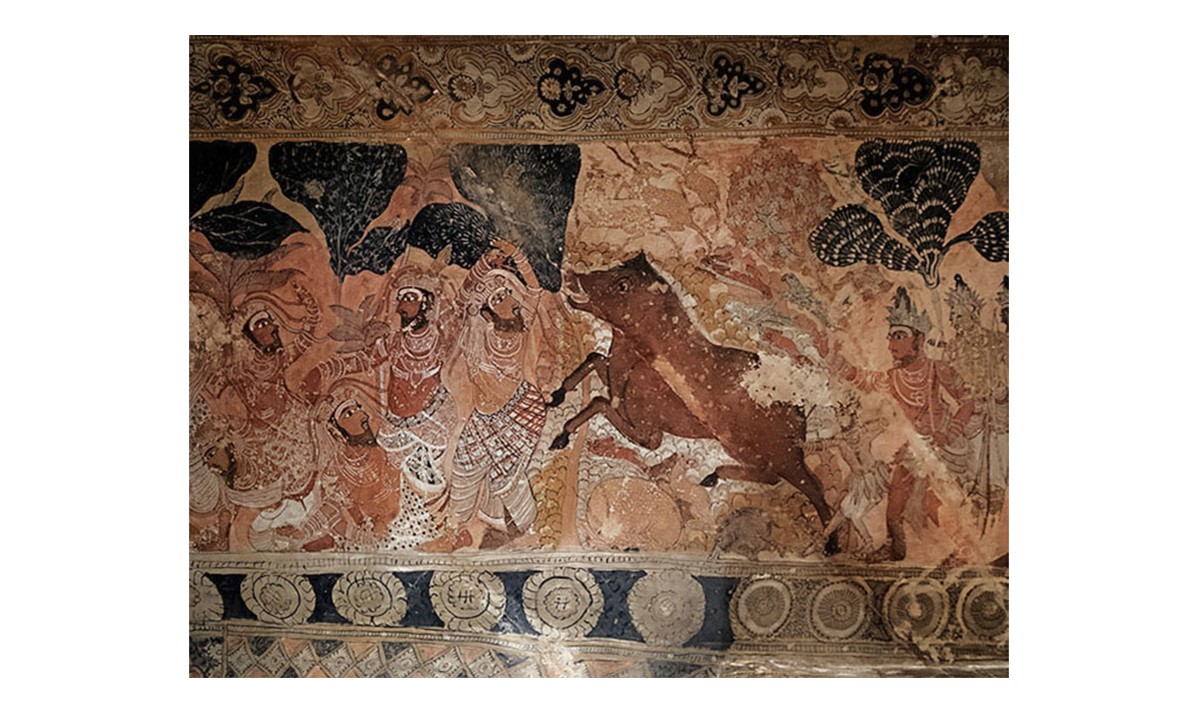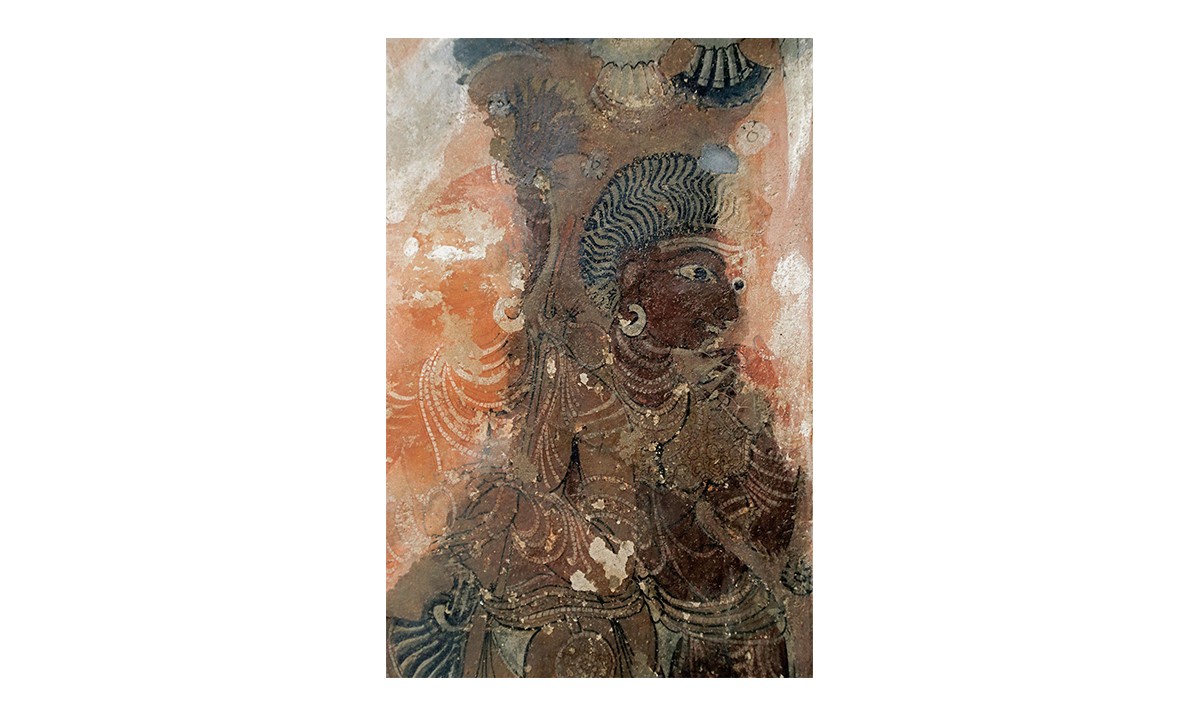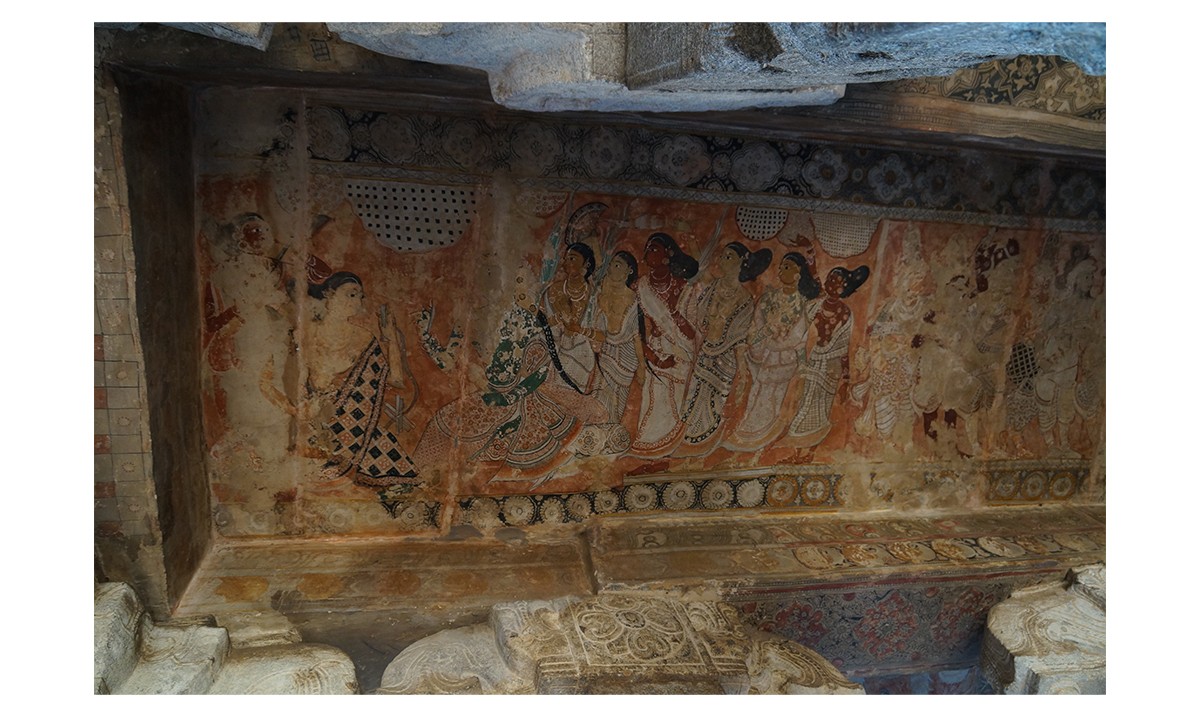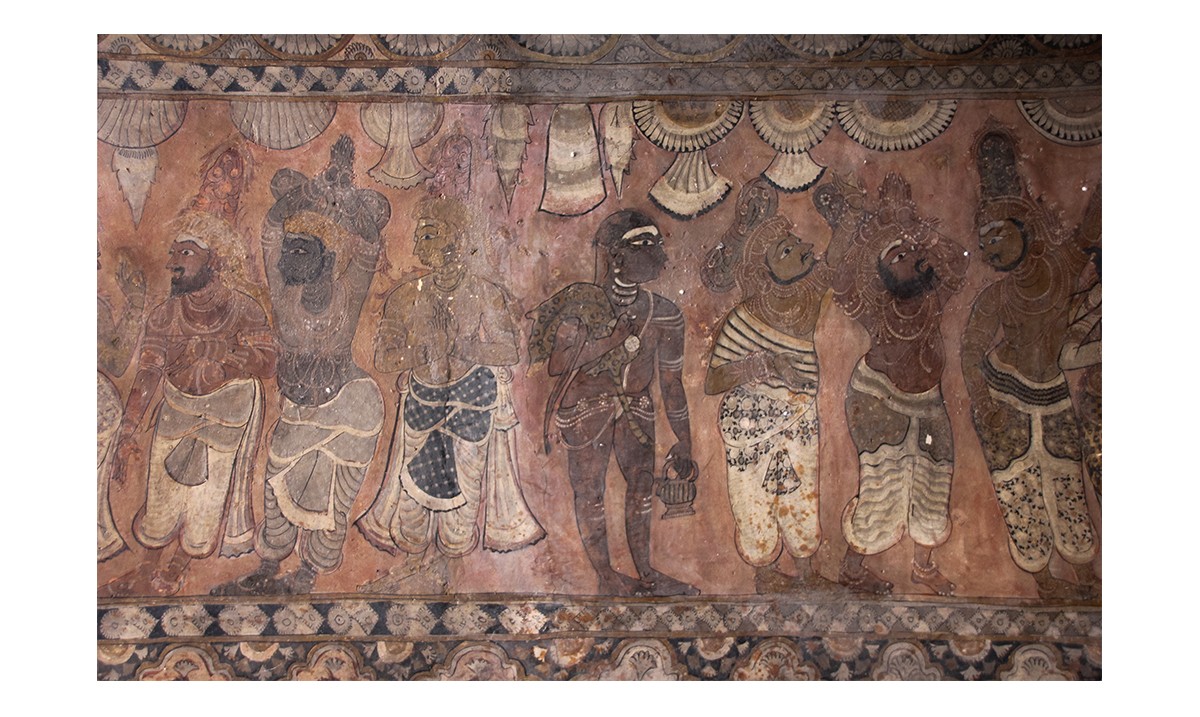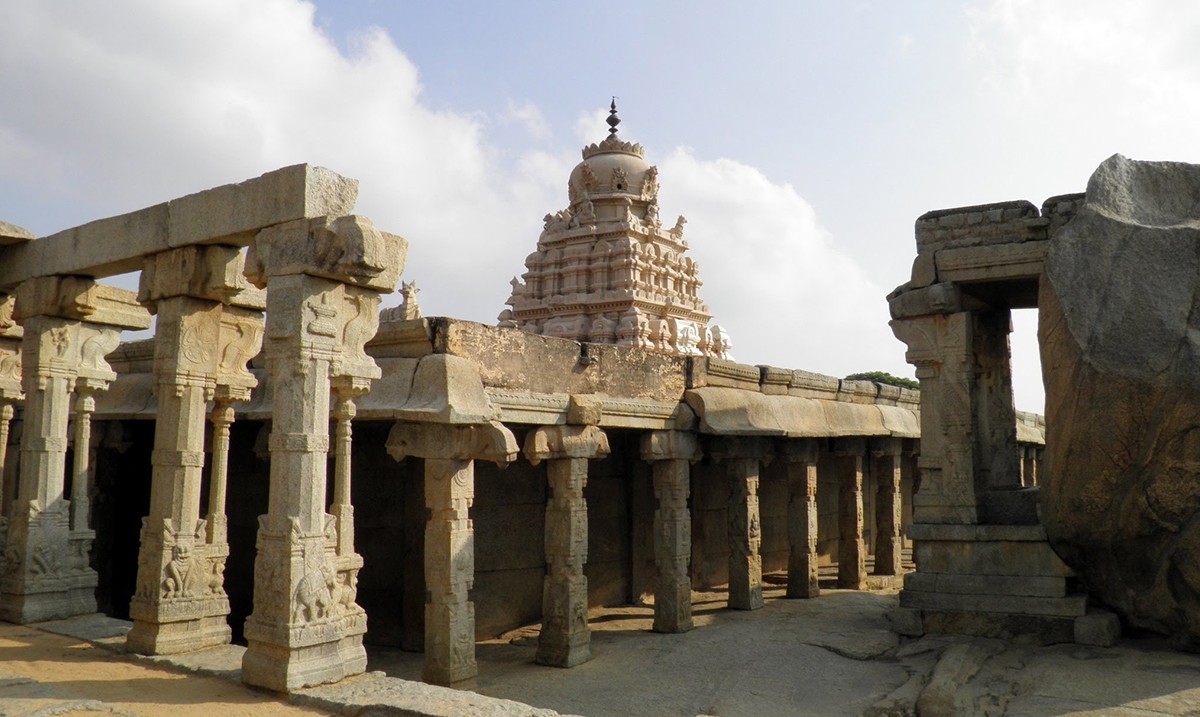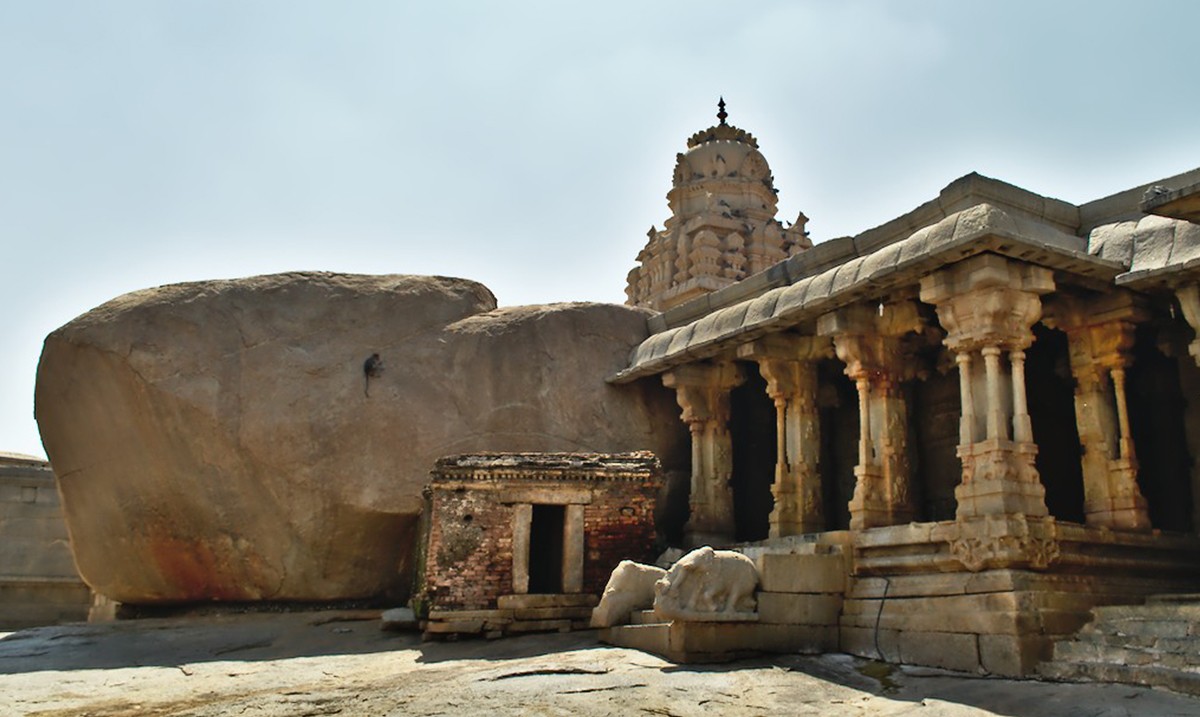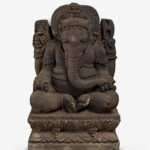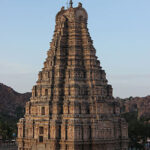The Virabhadra Temple in Lepakshi is Consecrated
1530
Located in Lepakshi in present-day Andhra Pradesh, India, the Virabhadra Temple dedicated to the warrior form of the Hindu deity Shiva is completed. Apart from its extensive sculptural ornamentation and large statues of Nandi and a seven-headed serpent, it is particularly significant for its ceiling murals.
Remaining well-preserved to the present-day, the murals will be uniquely valuable as they not only feature mythological narratives, but also document the social and religious life of the period. The characters’ costumes, jewellery and headgear, particularly the patterned fabric and drapery styles of saris will provide useful information on Vijayanagara material culture. The murals also reveal associations with the Islamic world and suggest that Vijayanagara fashion drew from a pool of syncretic sources. This will be corroborated by written testimonies from Persian, Chinese, Portuguese and Italian travellers about the costumes of the Vijayanagara elite. Stylistically, the Virabhadra murals will be the basis for Kalamkari designs, rendered on painted fabric originally used as temple tapestries, and in subsequent centuries, a major export primarily to Southeast Asia.
Bibliography
Michell, George. Southern India: A Guide to Monuments, Sites, and Museums. Delhi: Roli Books, 2013.
Wagoner, Phillip B. “‘Sultan among Hindu Kings’: Dress, Titles, and the Islamicization of Hindu Culture at Vijayanagara.” The Journal of Asian Studies 55, no. 4 (November 1996): 851–80. http://www.jstor.org/stable/2646526.
Feedback 
This entry appears in
Art in South Asia
Visit Timeline
Associated Timeline Events
First Published: March 11, 2024
Last Updated: May 22, 2024



